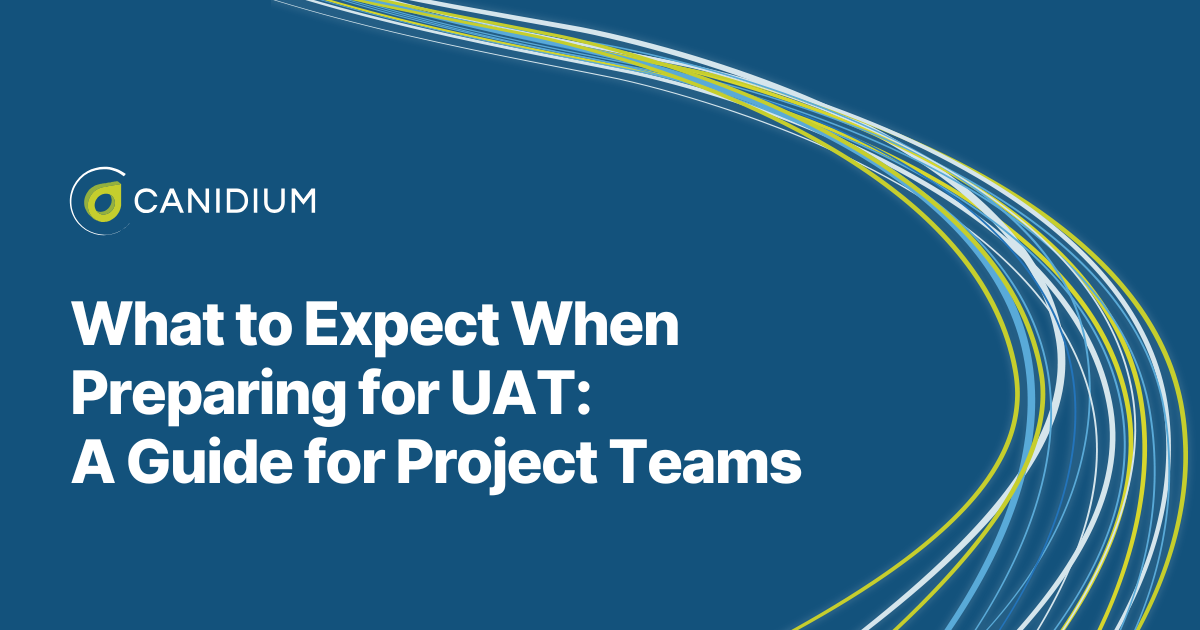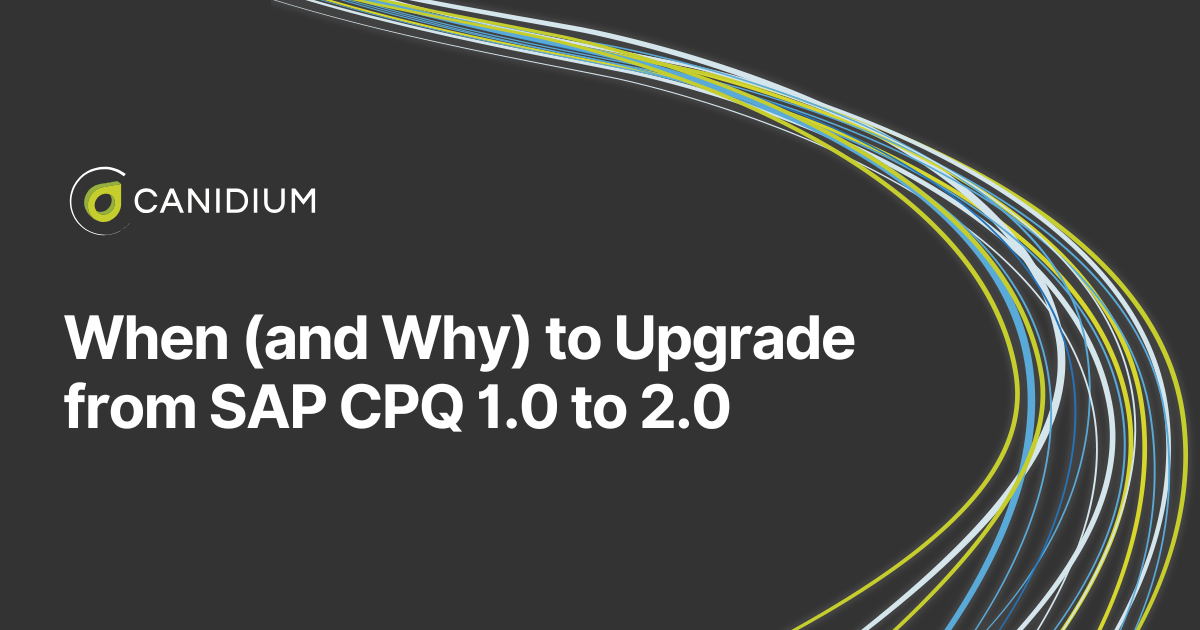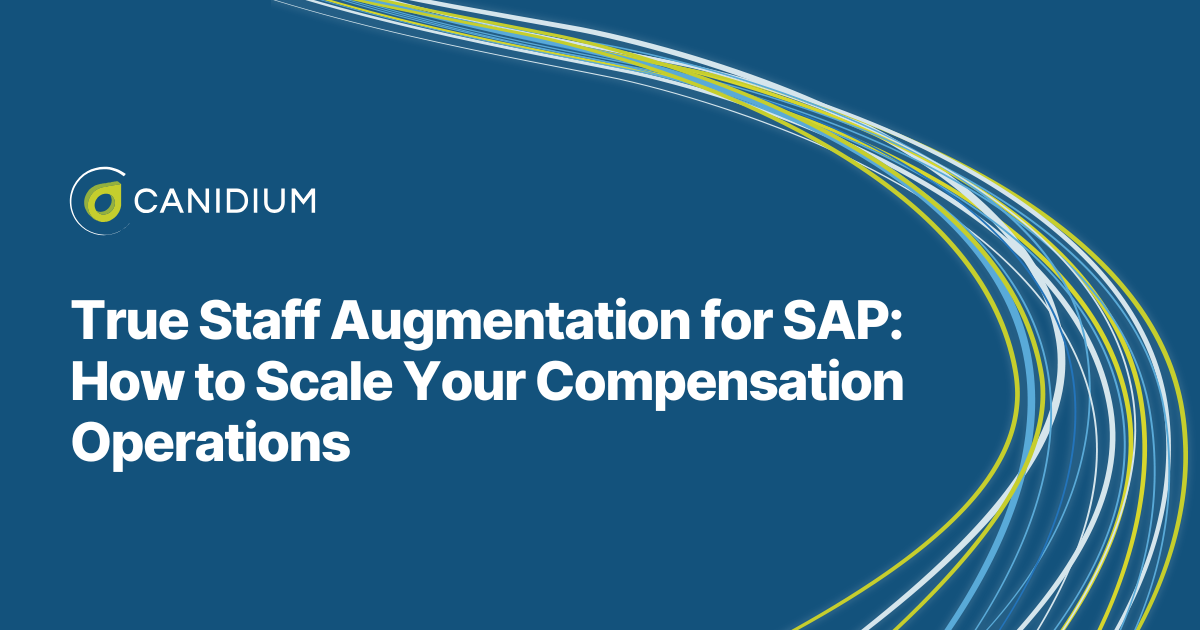A complete guide to resources required for an SAP CPQ Implementation with Canidium
Implementing SAP CPQ is not just a technology project—it’s a business transformation initiative. While your SI partner does the heavy lifting in terms of configuration, integration, and technical delivery, your internal team plays a critical role in ensuring the solution reflects how your business actually sells and operates.
One of the most common questions we receive at Canidium is: “How much time will this take from my team?” The short answer: it varies depending on scope and complexity. But the better answer involves breaking down which roles are required, when they’re needed, and how the workload is distributed between your team and the SI partner.
Let’s take a closer look.
Project Time Commitment: What to Expect Overall
SAP CPQ implementations typically run from 12 to 36 weeks, depending on integration needs, product/pricing complexity, and how clearly defined your business rules are from the start.
For your internal team, this does not mean full-time involvement across the board. Instead, think of the commitment in phases:
.png?width=1024&height=768&name=CPQ%20Implementation%20Client%20Time%20Commitment%20(1).png)
Key Roles Required from Your Organization
The success of an SAP CPQ implementation depends heavily on having the right people available at the right time. Here are the most critical roles on your side:
Business Product Owner
- Acts as the internal decision-maker for process, workflow, and configuration choices.
- Provides sign-off on requirements, test results, and final functionality.
- Estimated average time: 4–6 hours/week throughout the project
Sales Operations / Business SME(s)
- Help define product configuration rules, pricing logic, discounting processes, and quote workflows.
Validate that business requirements are accurately translated into the system. - Most active during Discovery and UAT.
- Estimated time: 6–10 hours/week during key phases
IT / Systems Architect(s)
- Ensures integration feasibility, data mapping, and internal security standards are met.
- Supports access management, user provisioning, and technical review.
- Estimated time: 2–4 hours/week, heavier during integration testing
Data Steward / Product Catalog Owner
- Provides clean product, pricing, and customer data to load into CPQ.
Works with the SI partner to map data into CPQ formats. - Estimated time: 3–6 hours/week during early phases
UAT Testers
- Execute real-world scenarios to confirm system functionality.
- Provide detailed feedback and log issues for resolution.
- Typically cross-functional: sales, operations, pricing, finance.
- Estimated time: 10–15 hours/week for 2–3 weeks during UAT
Training & Change Management Lead (optional but ideal)
- Prepares rollout materials, coordinates training, and drives user adoption.
- Acts as the voice of end users during system design.
- Estimated time: 3–6 hours/week late in the project
Client Project Manager (Optional but ideal)
- Coordinates with the client team for action items and tasks required
- Collaborates on timelines, risk management, communication, and stakeholder alignment with the SI partner’s Project Manager
.png?width=1080&height=1350&name=Modern%20Team%20Workflow%20Process%20Infographic%20Instagram%20Post%20(1).png)
How to Streamline Internal Involvement
Given your team's existing responsibilities, we recognize that implementing SAP CPQ can seem like an added burden. Canidium deploys complex software with minimal disruption, leveraging your team's expertise without overwhelming them. Through phased implementation, clear communication, defined roles, and our deep expertise, we handle the heavy lifting, ensuring an efficient and unobtrusive process. This allows your team to focus on their core duties while contributing to successfully adopting SAP CPQ.
- Pre-schedule workshops and reviews: Align calendars early to protect focus time for key participants.
- Create reusable documentation: Standardize your product/pricing models before Discovery to reduce repeat questions.
- Assign a single point of contact: A central project lead on your side helps streamline decisions and reduces meeting fatigue.
- Use targeted sessions, not general updates: Focus meetings on decisions or feedback, not status reporting (we handle that offline).
- Leverage Guided UAT: Our structured UAT process reduces confusion, accelerates testing, and limits unnecessary meetings.
SAP CPQ: It’s a Shared Investment, Not a Shared Burden
SAP CPQ is not a plug-and-play tool—it’s a platform that becomes powerful when it’s configured to your business. That’s why your team’s participation is essential. But you don’t need to do everything. A well-balanced partnership, where your team provides input and validation and your SI partner handles delivery and design, leads to the most successful outcomes.
At Canidium, we prioritize directness and efficiency when building a strong partnership. We help you understand when and where your team needs to engage—and make sure that time is well spent. The result is a CPQ solution that fits your business without overwhelming your team.
In this article, we outlined what kind of time commitment to expect during a typical SAP CPQ implementation and broke down the internal roles that are critical to success. We clarified how the SI partner’s team supports those responsibilities. From Discovery to UAT to Go-Live, we emphasized where your team will be most involved—and how to prepare each role to contribute effectively without unnecessary disruption.








